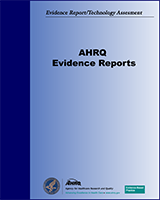|
Coates and Bakheit, 1997
| CS | 48 | 69.9 | NR | 1.4 mean UPDRS | 6.7 yrs | Dysphagia | Chicago Assessment Scale (BSE) | NR | NR | 81.1% scored <5 on at least 1 item on Chicago Assessment Scale. Mostly mild impairment.
Significant correlation btwn severity of disease and severity of dysphagia |
|
Fuh, Lee, Wang et al., 1997
| Random case series | 19 | 68.4 | At least 2 of 3 cardinal symptoms + levodopa response | 1.9 mean Hoehn and Yahr | 3.2 yrs | Swallowing problems | MBS with and without L-dopa | NR | NR | Without L-dopa:
Abnormal MBS:
63.2% (12/19)
Aspiration: 15.8% (3/19)
With L-dopa:
Abnormal MBS:
31.6% (6/19)
Aspiration:
5.3% (1/19) |
|
Edwards, Quigley, Harned et al., 1994
| Case-control | 20 (13, 7) | 66.6, 67.0 | NR | 22.2 mean UPDRS | 5.3 yrs | Dysphagia | GI survey; videoesophagram | NR | PD pts:
76.9% (10/13)
Controls:
14.3% (1/7) | On video:
Oral dysphagia 4
Pharyngeal dysphagia: 1
Esophageal dysphagia 8
No sign. Diffs from controls |
|
Hartelius and Svensson, 1994
| Survey, self-report | 258 | NR | Not done | NR | NR | Swallowing problems | 25 questions, forced-choice | NR | NR | Swallowing problems often: 18%
Swallowing liquids often a problem: 15%
Choking often a problem: 21% |
|
Wintzen, Badrising, Roos et al., 1994
| PCS | 22 | 62.7 | NR | 1.5-4 Hoehn and Yahr; 1.4 mean UPDRS | 6.7 yrs | Dysphagia | Swallowing Function Questionnaire; VFSS | NR | Questionnaire:
72.7% (16/22)
VFSS:
81.1% (18/22) | No correlation between severity of disease and number of dysphagia symptoms |
|
Singer, Weiner, and Sanchez-Ramos, 1992
| Interview | 48 | 65.9 | NR | 1-3 Hoehn and Yahr | 7.8 yrs | Dysphagia | Questionnaire | NR | 22.9% (11/48) | Significantly higher incidence of dysphagia in PDs than in control group (6.3%), p<0.05 |
|
Bushmann, Dobmeyer, Leeker et al., 1989
| CS | 20 | 65.7 | NR | NR | NR | Dysphagia | Questionnaire; MBS without L-dopa; MBS with L-dopa | NR | Subjective:
35% (7/20)
MBS w/o L-dopa:
Dysphagia:
75% (15/20)
Aspiration:
15% (3/20) | MBS w/ L-dopa: 5/15 dysphagics demonstrated mild to marked improvement |
